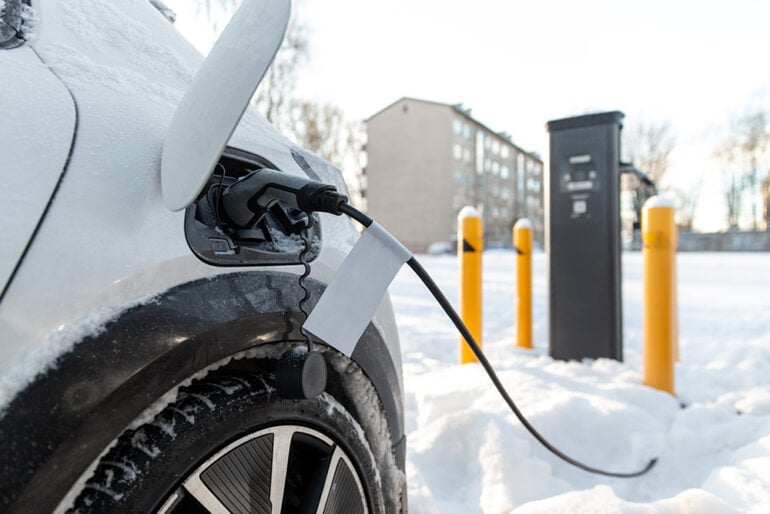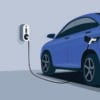Have you ever noticed it takes longer to charge an electric vehicle (EV) in the winter? No matter what kind of EV you own, cold weather will increase charging times, reduce your driving range, and could even cause your batteries to die. Here’s everything you need to know about how to charge an EV in the cold and helpful tips on how to keep your EV running all winter long.
How Does Cold Weather Affect EV Charging?
Most electric cars are powered by hundreds or even thousands of small lithium-ion batteries. While these batteries are more advanced than regular batteries, the chemical reactions inside them will still slow down in the cold, which will reduce their charging and discharging efficiency.
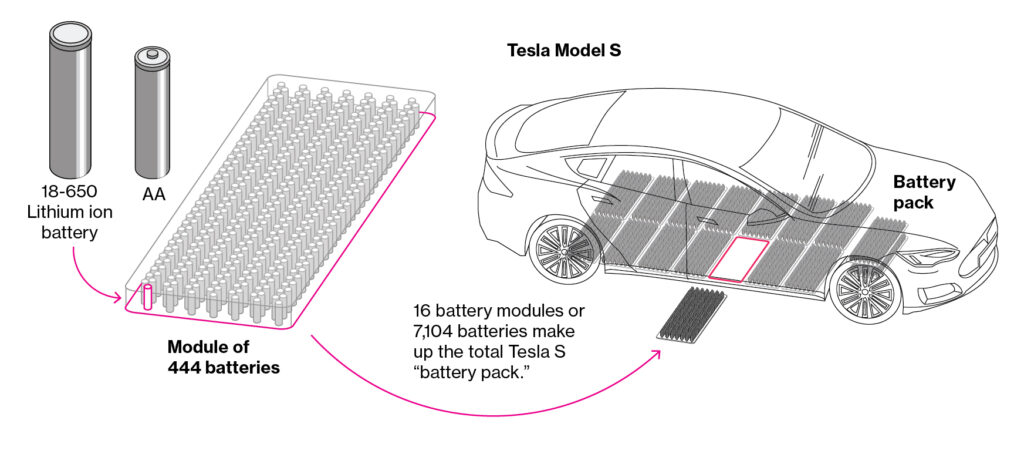
However, some of the coldest countries on earth have the greatest number of EV owners per capita, including Norway, Iceland, and Sweeden, according to the World Resources Institute. Owners in these northern countries are able to get around all winter by properly maintaining their electric cars.
How Long Does It Take To Charge an EV in Cold Weather?
It can take three times longer to charge an EV in colder conditions, according to a study from the Idaho National Laboratory. Specifically, the research states that charging an electric car at 32 degrees Fahrenheit will supply 36% less energy to the batteries compared to charging at 77 degrees.
The study includes a map that shows where EV owners will experience the longest charging times when using public charging stations in the US. In the red areas up north, it can take 30 minutes to charge an EV from 20%-50%, while the green areas show areas where you can charge an EV from 20%-80% in the same amount of time.
Read More: How long does it take to charge an electric car?
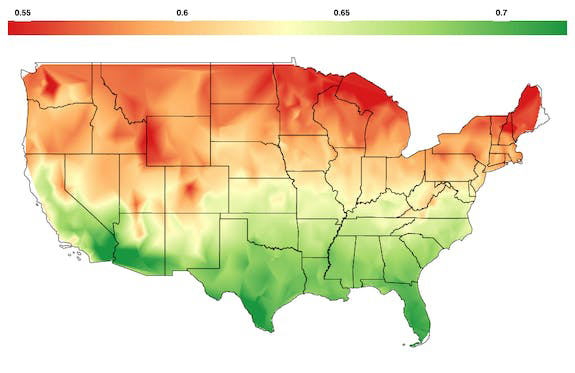
It’s important to note that charging times will be slower at home, because an electric car will use some energy to heat itself, and some energy will be lost due to heat transfer. With these issues combined, your EV might not receive a charge at all when using a level 1 charger or low-power level 2 charger at home.
Read More: How to choose the right EV charger
How Does Cold Weather Impact EV Range?
In a 2019 study, the American Automotive Association (AAA) found that driving in 20-degree temperatures results in a 12% decrease in an EV’s total range. For example, a 2017 Tesla Model S had a total range of 239 miles at 75 degrees Fahrenheit, but that decreased to 212 miles at 20 degrees.
Things get worse when you turn the heaters on. With the HVAC system set to “auto” mode, AAA found a 41% decrease in the driving range of the EVs they tested. That means the 2017 Tesla Model S went from a total range of 239 miles at 77 degrees to just 148 miles at 20 degrees with the HVAC system turned on.
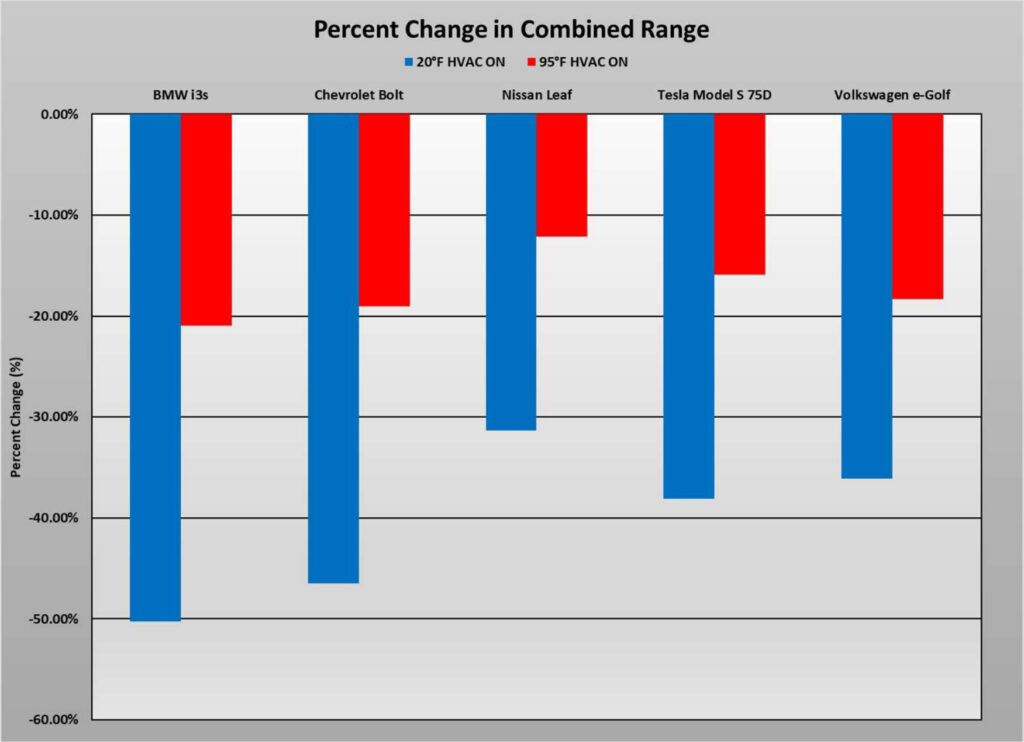
Does It Cost More To Charge an EV in Cold Weather?
Since it takes longer to charge an EV in the cold, and your car uses more energy while driving, it makes sense that it will also cost more. On average, it costs 65% more to charge an EV at 20 degrees Fahrenheit compared to 77 degrees. However, if you don’t turn the heaters on, it only costs 9% more.
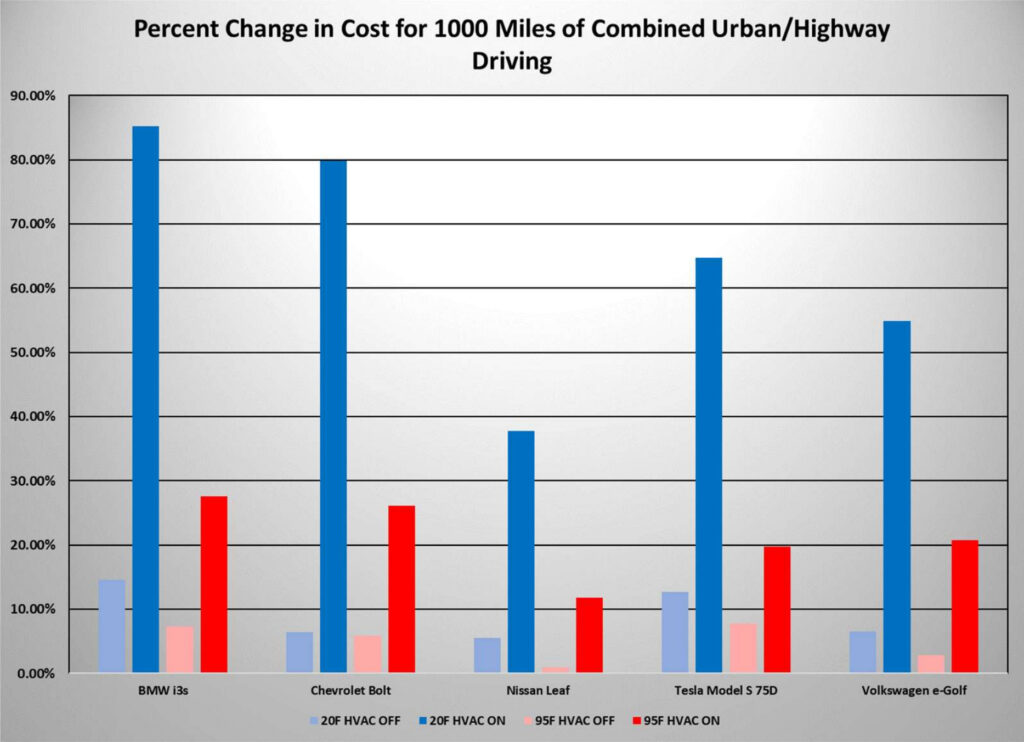
Even if your EV is less efficient in the cold, energy prices are generally lower during winter months. That means you might be able to offset a portion of the additional costs, especially if you schedule your EV charging for off-peak hours and sign up for “time of use” programs through your energy company.
Read More: How much does it cost to charge an EV?
Tips for EV Charging in Cold Weather
Make sure to winterize your EV before it gets too cold outside. The most important thing you can do is keep your EV warm by parking it in a garage, using the preconditioning feature, and plugging it in before driving. You should also keep the battery above 20% to make sure it can start in cold temperatures.
• Warm Up Your Garage
The easiest way to keep your EV warm in the winter is to park it inside a garage or at least a covered parking spot. The more you can shield your electric car from the cold, the less energy it will take to heat up the batteries and cabin before you start driving.
It is recommended to warm your garage to at least 40 degrees, but if you can keep it above 60 degrees, you might not experience any issues associated with charging an EV in the cold.
• Always Precondition Your EV
Many EVs have a “preconditioning” feature, which warms up the battery and cabin around 30-45 minutes before you start driving. Without preconditioning, your battery will need to use its own limited supply of energy to warm up your EV while driving, which will significantly reduce your driving range.
Some electric cars even let you schedule your departure time so your car will reach the perfect temperature before you leave every morning. Just don’t forget to precondition your EV on the way back home, too.
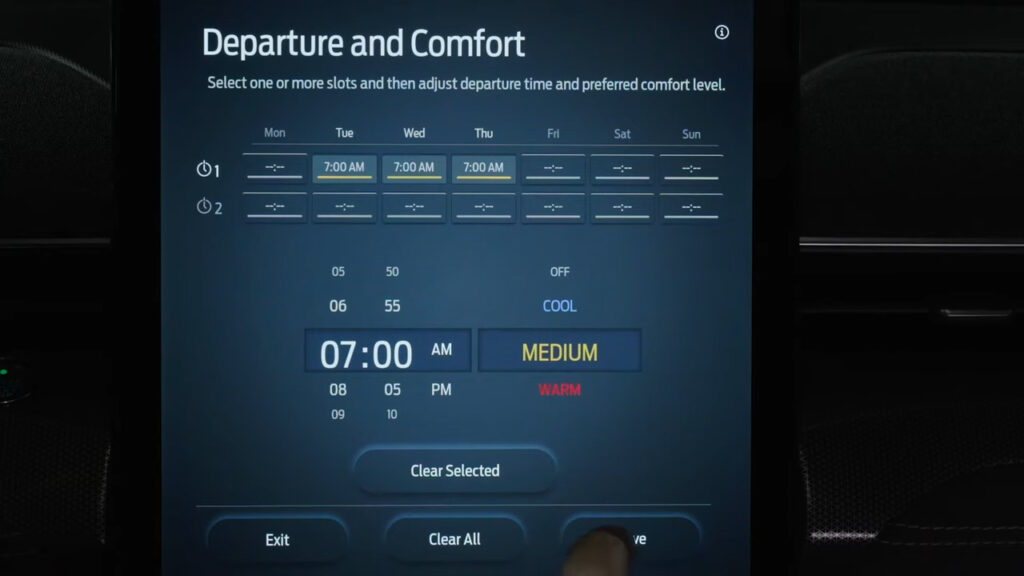
• Keep Your EV Plugged In
Whenever an EV is plugged into a charger, some of the electricity will be used to keep the batteries warm. So, it’s a good idea to keep your EV plugged in and turn on the heaters before driving in cold weather conditions, even if it’s only 20-30 minutes before you leave.
During the winter months, you should plan on charging your EV more frequently, and it’s a good idea to keep a mobile charger in your trunk in case of emergencies.
• Don’t Let Your Battery Go Below 20%
In cold temperatures, your EV’s battery management system will reserve around 15-20% of the battery capacity to warm itself up. So, you should always keep your battery above 20% to ensure it will have enough power to work properly.
Every year, you can read stories about EVs that can’t start when temperatures fall below freezing in places like Chicago. However, this usually only happens if the battery state of charge (SoC) drops below 20% and your EV is left out in the cold for long periods of time.
• Use the Seat Warmers Instead
Instead of using the heaters to warm up your EV, you can save a lot of energy by using the seat warmers and driving wheel warmers. Doing this can also help you save time, money, and energy when driving, and it can be almost as comfortable.
If you need any help installing your EV charger, HelloTech can send an electrician to your door to give you a free quote. We can provide an in-home quote in as little as 15-30 minutes, and our technicians can schedule your installation within a week or two of the estimate.
